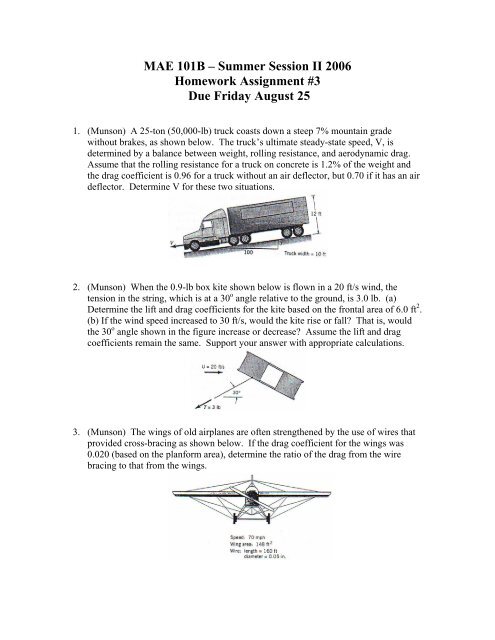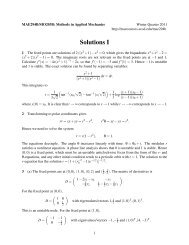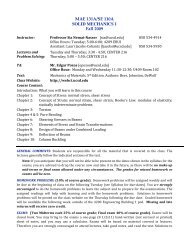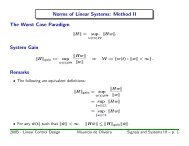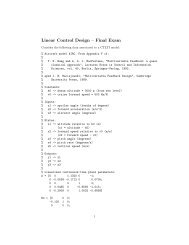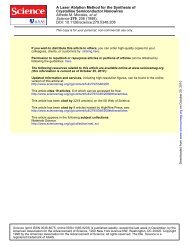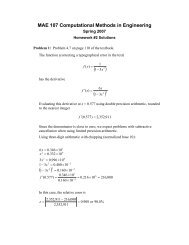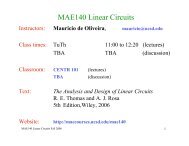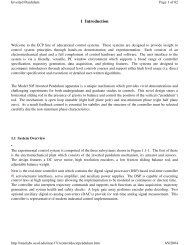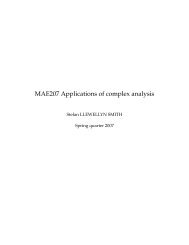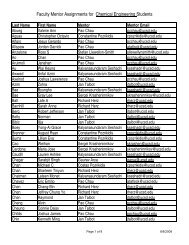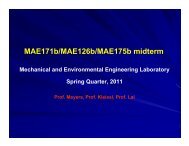Homework Assignment 3
Homework Assignment 3
Homework Assignment 3
You also want an ePaper? Increase the reach of your titles
YUMPU automatically turns print PDFs into web optimized ePapers that Google loves.
MAE 101B – Summer Session II 2006<br />
<strong>Homework</strong> <strong>Assignment</strong> #3<br />
Due Friday August 25<br />
1. (Munson) A 25-ton (50,000-lb) truck coasts down a steep 7% mountain grade<br />
without brakes, as shown below. The truck’s ultimate steady-state speed, V, is<br />
determined by a balance between weight, rolling resistance, and aerodynamic drag.<br />
Assume that the rolling resistance for a truck on concrete is 1.2% of the weight and<br />
the drag coefficient is 0.96 for a truck without an air deflector, but 0.70 if it has an air<br />
deflector. Determine V for these two situations.<br />
2. (Munson) When the 0.9-lb box kite shown below is flown in a 20 ft/s wind, the<br />
tension in the string, which is at a 30 o angle relative to the ground, is 3.0 lb. (a)<br />
Determine the lift and drag coefficients for the kite based on the frontal area of 6.0 ft 2 .<br />
(b) If the wind speed increased to 30 ft/s, would the kite rise or fall? That is, would<br />
the 30 o angle shown in the figure increase or decrease? Assume the lift and drag<br />
coefficients remain the same. Support your answer with appropriate calculations.<br />
3. (Munson) The wings of old airplanes are often strengthened by the use of wires that<br />
provided cross-bracing as shown below. If the drag coefficient for the wings was<br />
0.020 (based on the planform area), determine the ratio of the drag from the wire<br />
bracing to that from the wings.
4. Assume the Wright Brothers airplane had 60 m of 6 mm diameter guy wires. If<br />
flying at 150 km/hr at STP conditions, what power was needed to move the guy<br />
wires?<br />
5. What if the guy wires in problem 4 were optimally faired as shown below, how much<br />
power would be saved?<br />
6. Find the terminal velocity of hailstones with a diameter D = 10mm falling in standard<br />
air. Assume the hailstones are spherical.<br />
7. How much more power is required to peddle a bicycle at 15 mph into a 20 mph<br />
headwind (a) than at 15 mph through still air (b)? Assume a frontal area of 3.9 ft 2 and<br />
a drag coefficient of CD = 0.88.<br />
8. It is suggested that the power, P, needed to overcome the aerodynamic drag on a<br />
vehicle traveling at a speed U varies as P ~ U n . What is an appropriate value for the<br />
constant n? Explain your reasoning.<br />
9. A 0.30-m-diameter cork ball (specific gravity, SG = 0.21) is tied via a long string to<br />
an object on the bottom of a river. The current in the river, U, causes the ball to<br />
assume a 30 o angle with the river bottom. What is the current speed, U.<br />
10. The United Nations Building in New York is a rectangle approximately 87.5 m wide<br />
and 154 m tall. Determine the drag on this building if the drag coefficient is 1.3 and<br />
the wind speed is 20 m/s.<br />
11. Repeat problem 10 if the velocity profile against the building is a typical profile for<br />
an urban area (u = Cy 0.4 ) and the wind speed half way up the building is 20 m/s.<br />
Problems from Fox and McDonald:<br />
12. 9.71<br />
13. 9.101<br />
14. 9.140<br />
15. 9.158


